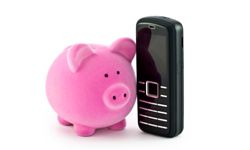It wasn't that long ago that an account deposit or withdrawal required a visit to your bank to complete the transaction. Banking was inconvenient and time consuming. Today, we have lots of options when it comes to financial transactions. Mobile banking is an increasingly popular way to monitor and manage your money.
But how secure is mobile banking? Could a thief sniff out your bank account information digitally? Is it safe to make financial transactions using an app or text messaging, or by visiting a mobile Web site?
Advertisement
The good news is that mobile banking is somewhat secure just because there are so many variations of banking apps and methods in the market. A thief has no way of predicting which method a potential victim might use. If there were only one standardized method the story might be different. Even so, there are certain rules you should follow to make sure your banking information remains safe.


